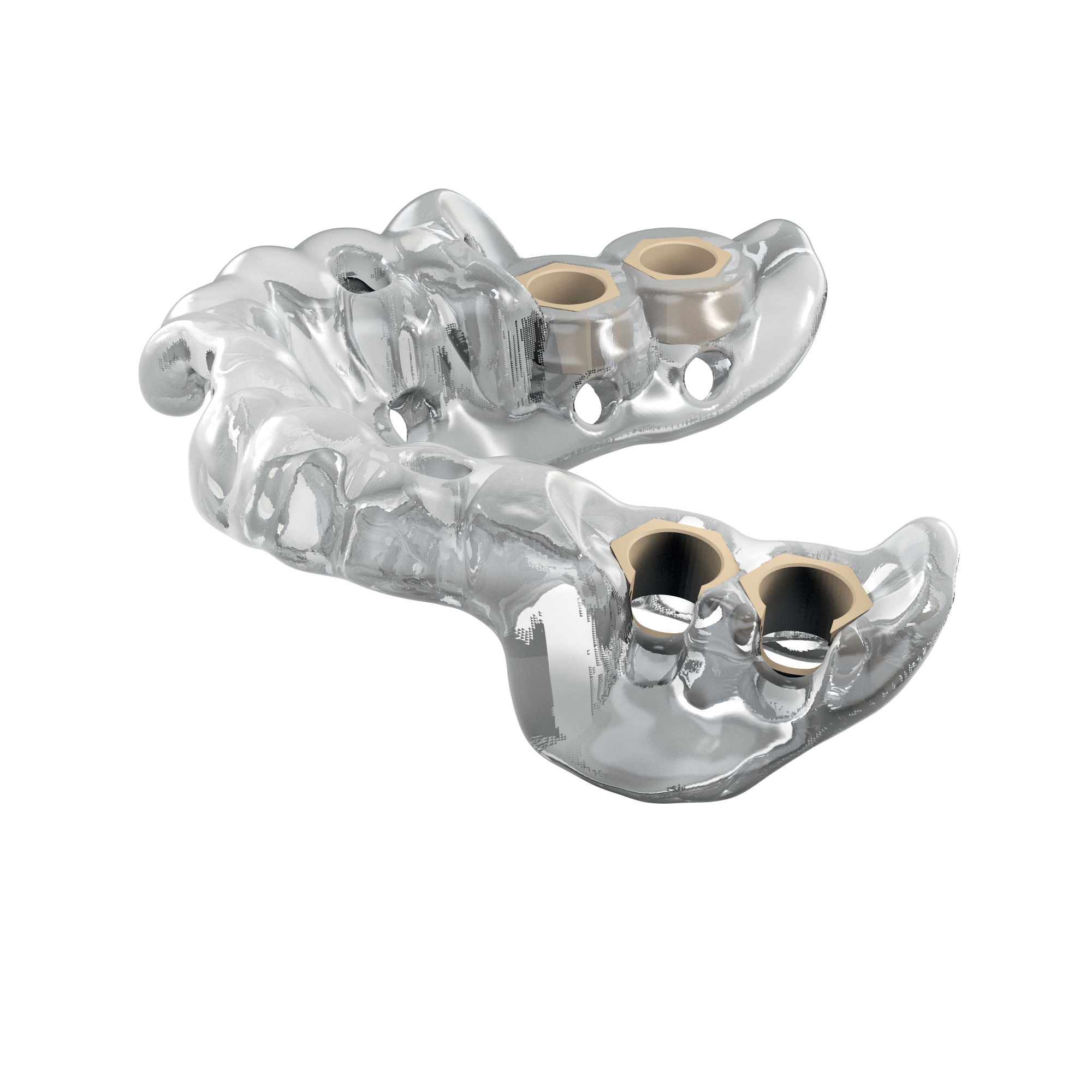
SURGICAL GUIDE
Dental implant surgery can be done manually, but using a surgical guide alongside advanced planning software is gaining traction. Digital design allows for quick, precise, and cost-effective creation of guides, resembling acrylic stents, providing stable support for surgery, enhancing precision, and improving patient experience. The popularity of guided implant placement has surged recently due to faster computers, better software, and more CBCT scanners in dental offices, making it more viable and economical.
Surgical guide
DIGITAL WORKFLOW

1. diagnosis
To obtain a precise and usable image from X-rays, impressions, and intraoral scans, it's essential to configure the parameters accurately and ensure the proper positioning of the guide.
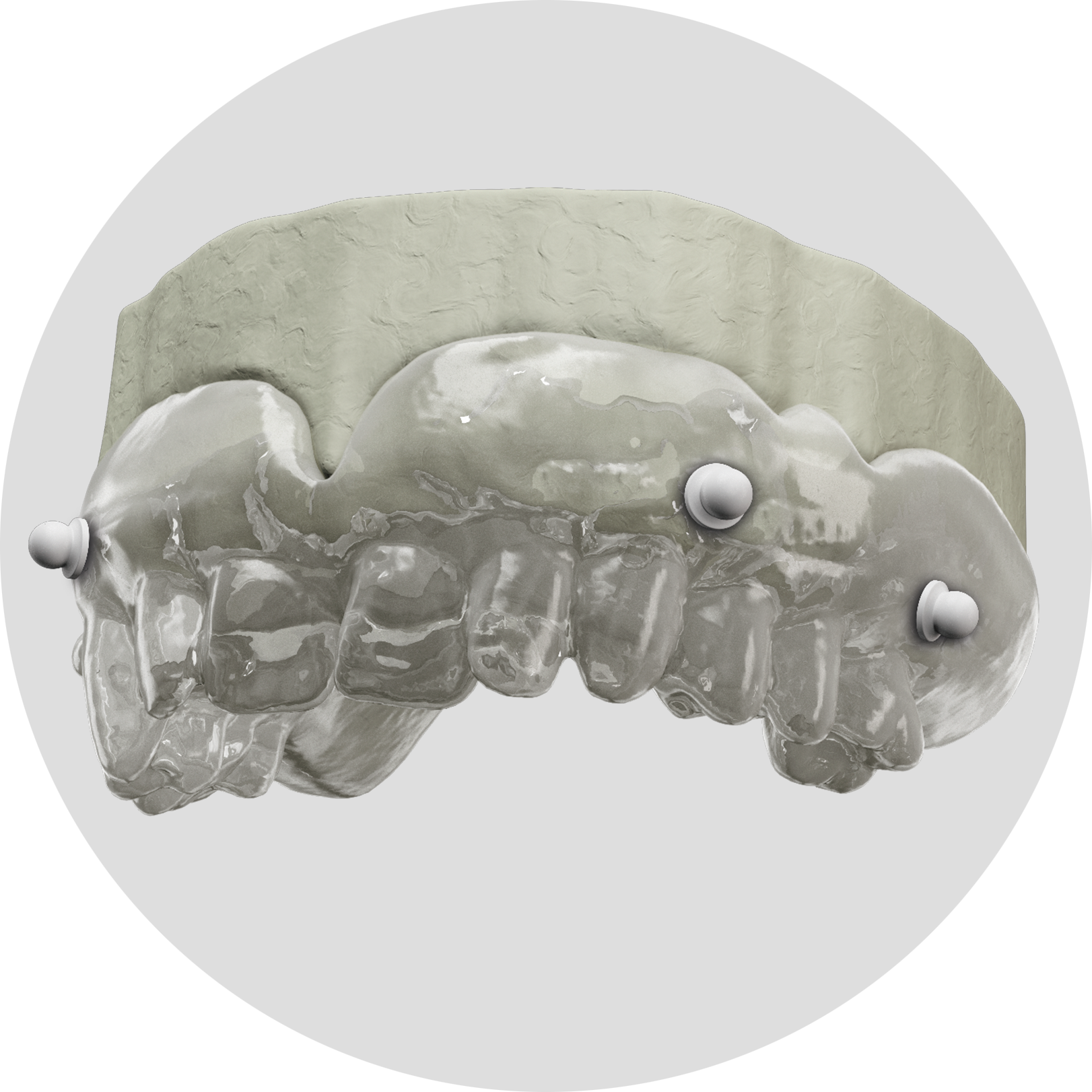
2. radiographic template
For edentulous patients or those with significant metal restorations, a radiographic template aligns DICOM files and models. During Cone Beam, verifying mouth opening, bone thickness, tooth spacing, and checking for metal interference are crucial. Impression accuracy is key, with bicomponent silicones for partial edentulism and polyether for full edentulism.

3. Data upload
Patient data must be digitised for software comprehension:
- Extracting bone structure details from the obtained DICOM file.
- Capturing soft tissues and teeth using the STL of the scanned model.
- Establishing spatial alignment through the radiographic template, accurately positioned in the mouth during scanning and on the model itself.
4. Planing
After acquiring files, seamless software integration enables meticulous planning. Aligning collected data produces a comprehensive image for precise implant placement, involving the radiographic template or referencing existing dentition in partial edentulous cases. The B&B Dental Guide System offers free planning software, while their in-house lab provides comprehensive case planning and template modeling services.
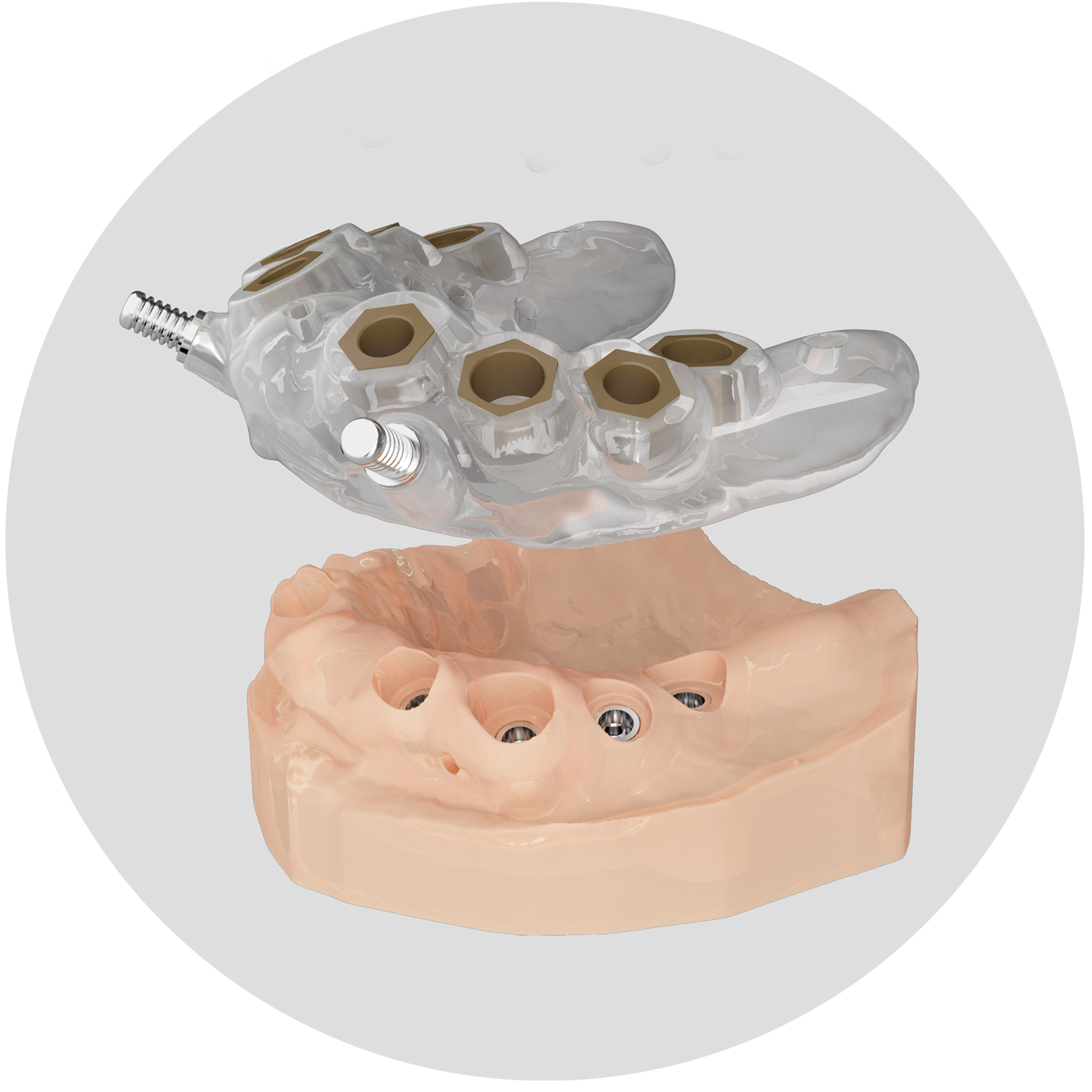
5.surgical guide and surgery
The surgical guide can be modelled using the planning or modelling software. It is important to evaluate the tolerance between sleeves and equipment parameters in order to ensure proper fit.
Before the surgery day, a surgical guide, implants and temporary crowns or bridges will be shipped safely.
types of SURGICAL GUIDES
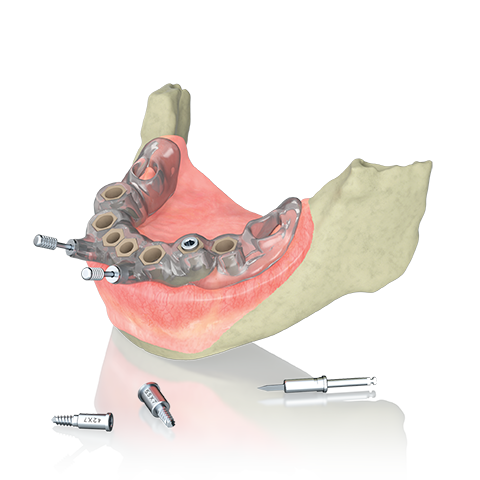
DENTAL SUPPORT GUIDE
If the patient has a residual dentition, the template can use it as a support to achieve stability. If you require greater stability, you should use crestal pins. The crestal pins should be inserted after using a lance drill and be chosen with a diameter that is consistent with the sleeve and the length depending on the implant to be inserted.
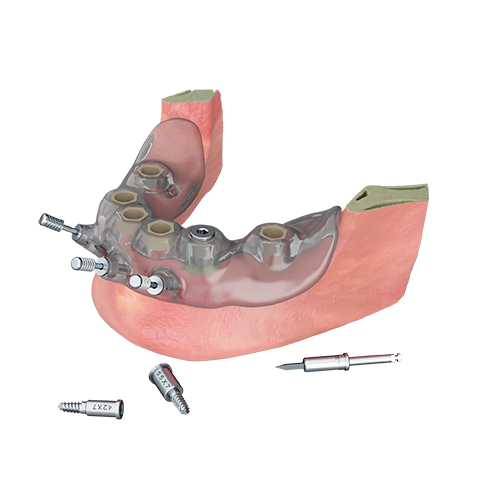
MUCOSAL SUPPORTED Guide
When there are no teeth present, the template will have an exclusively mucous support. To address this, lateral and/or crestal pins become necessary. After drilling the bone with the pin drill, lateral pins are inserted into dedicated sleeve holes in the vestibular area. During this step, the template is secured with a silicone bite. However, in some instances, lateral pins might not suffice. In such cases, crestal pins can be employed by creating holes with a lance drill and selecting a diameter aligned with the sleeve, with length contingent on the implant size.
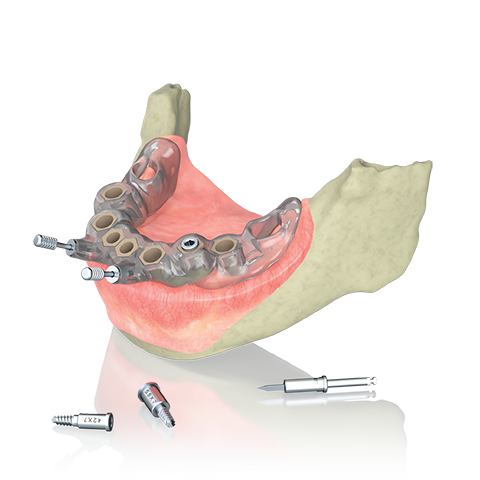
BONE SUPPORTED GUIDE
The bone-supported templates rest directly on the bone once the soft tissues have come off, and are adopted in cases where the bone appears to be irregular in shape and therefore an osteoplasty is required. This type of template should be fixed with lateral pins, after drilling the bone with the suitable drill. Also in this case, the use of crestal pins can increase stability if necessary.
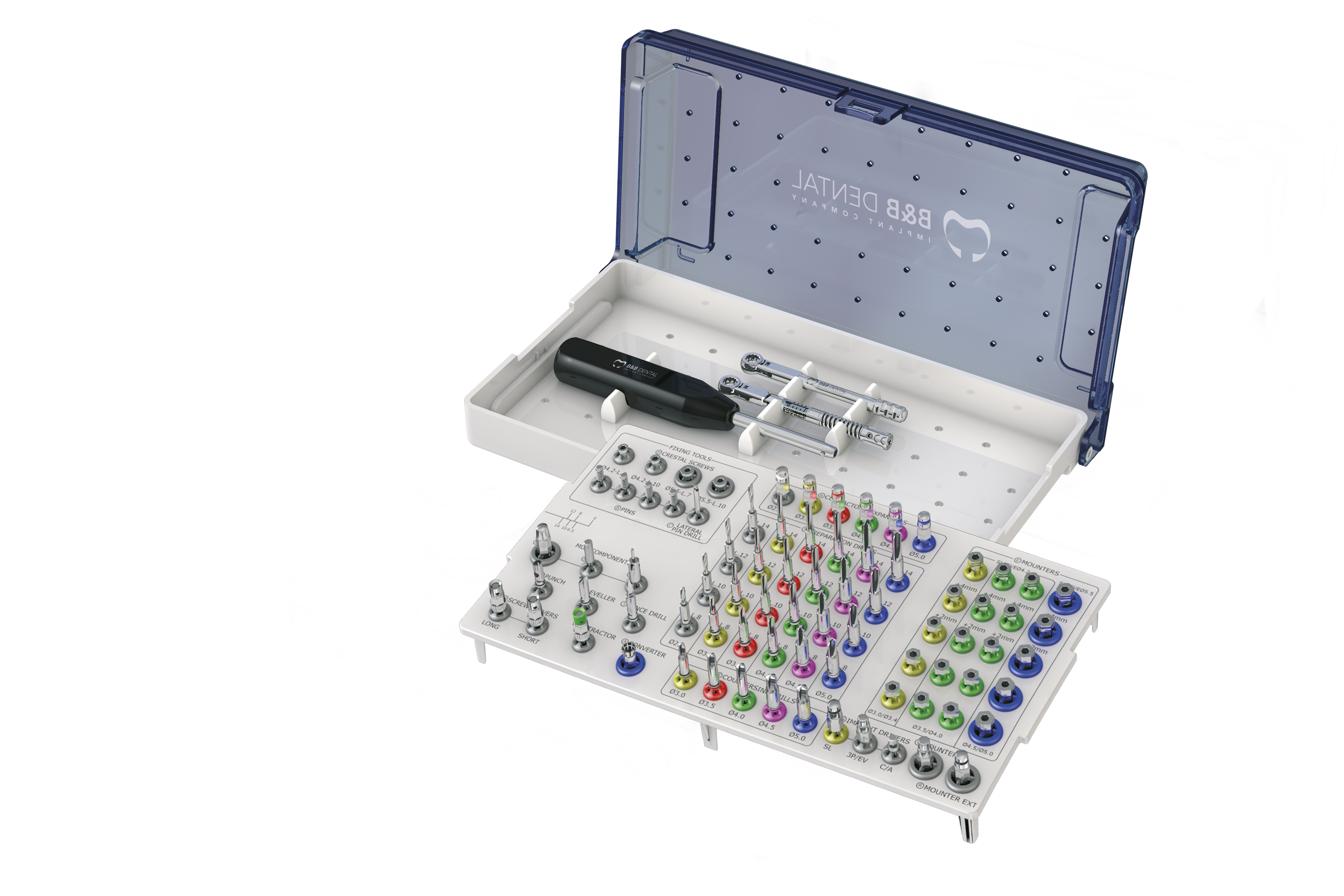
HOW TO USE THE SURGICAL KIT
GUIDE SURGICAL KIT
Prior to outlining the operative protocol, understanding the surgical kit's accessories is essential. B&B DENTAL SURGICAL KIT's instrument design suits guided insertion of SLIM, 3P, and EV line implants. Drill necks ensure precise insertion into guided sleeves, marking a 9 mm distance from the bone's crestal edge.
Materials comply with Directive 93/42 and Law 46/97, selected for specific intended use. Instruments are non-sterile; codes, descriptions, and lot numbers are labeled on packages. Proper cleaning, disinfection, and sterilization are imperative before use, as indicated in enclosed instructions. Drill wear varies with bone density, particularly harder bones, impacting residual cutting capacity. Regularly assess cutting capacity, especially with initial tools.


